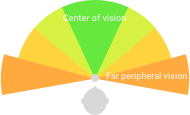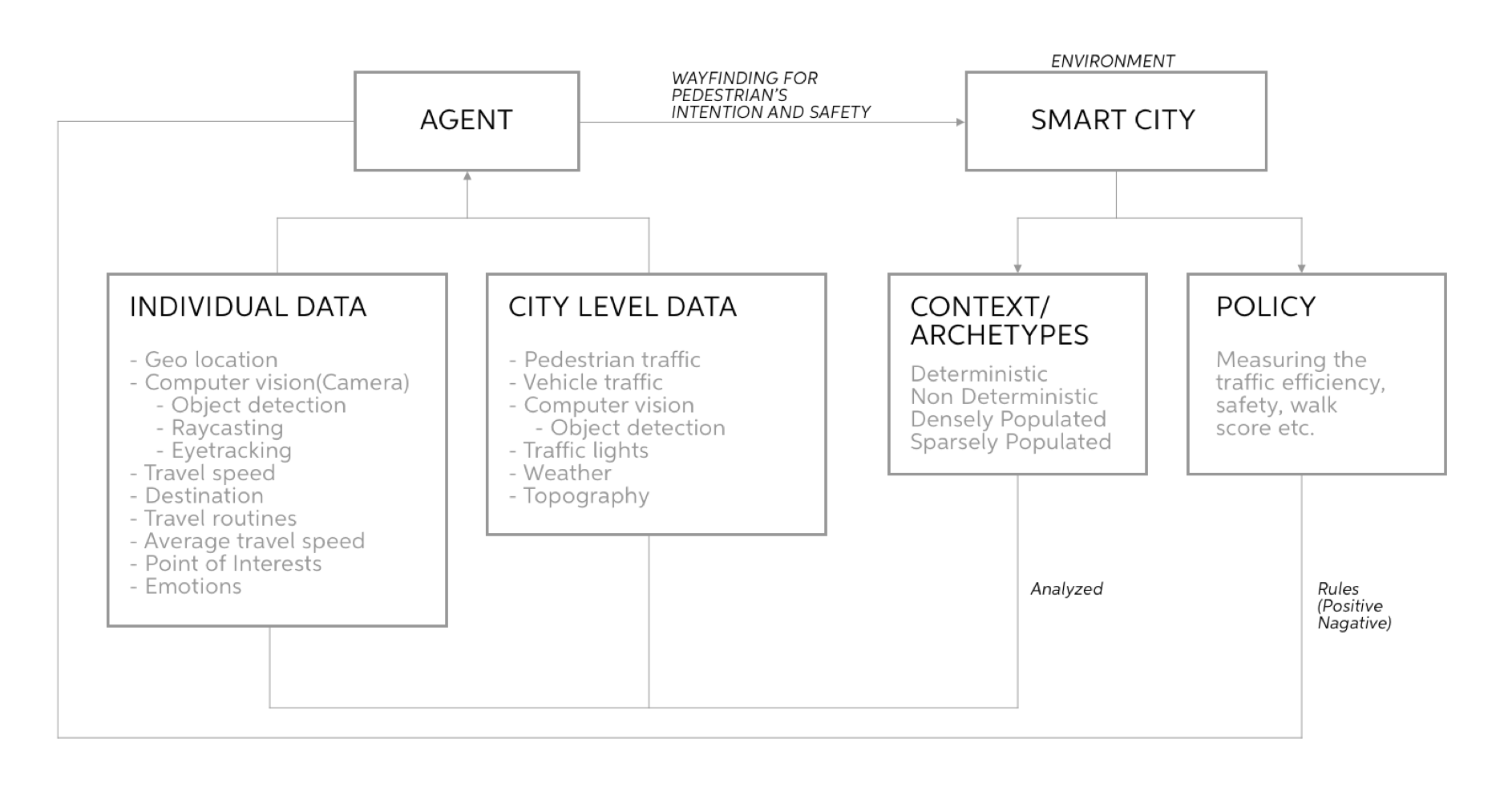Future connected city visions have been most fixated upon the autonomous vehicle. ThisWay is a system that addresses pedestrian flow in the future connected city. The project coordinates pedestrian and vehicles movement, enabling pedestrians to move more freely throughout a city. What if we give more agency to the pedestrian?
ThisWay
Summer 2019
- Agentive System Design
- Future-casting
- Prototype Strategy
- Unity Prototype
Mayor of Bogota, In J. Speck, “Walkable city”, 2012
THE INSPIRATION
Learn from making: Unity Nav Agent
Nav Agent is a navigation system in Unity that allows game objects to intelligently move around the game world. It helps the game objects to avoid moving obstacles and find the most efficient way while moving towards the goal. From this experiment, I imagined if there were an AI like Nav Agent in the real world and how would that help people to get around.
DESIGNING FOR PEDESTRIAN
how can it help pedestrians move more efficiently?
I aimed to shift the perspective onto the pedestrian and their experience moving through the urban fabric.
- Bhaskara Gundluru - CDM Smith
The environment of ThisWay agent is a hyper-connected city working on behalf of the pedestrians providing efficient ways to walk. The city would be collecting and analyzing tons of data from various sensors and cameras
from both the city level and the individual level. The agent would be rewarded by the policy developed in the environment which will help the agent to make smarter decisions.
THE APPROACH
LEARN FROM MAKING

The question was what data does the agent need to learn in order to understand pedestrian movement? Therefore, I simulated how the computer vision would perceive human’s focus and attention data which are the most critical variable when walking towards the goal.
ATTENTION & FOCUS DATA

I simulated the peripheral vision and visualization of different levels of attention using the ray-cast functions in Unity which is widely used in FPS games.
ATTENTION & CONTEXT

Then I implemented the attention & focus prototype into the city scale context where all the infrastructures are connected and able to sense the movement, head orientation, and eye-tracking of the pedestrian.
ORGANIC TRAFFIC FLOW

By simulating a more dynamic traffic situation, the next question was how would the agent efficiently signify important information to pedestrians.
THE USECASE
The agent would provide various forms of signifiers to the pedestrian such as mobile wayfinding app and dynamic street signals. The prototype shown below is one of the ideas from the design proposals: ambient sound signifier that addresses safety and efficiency to the pedestrian to walk in a more organic traffic situation.
TAKEAWAYS
This was a great opportunity to learn more about how global cities are envisioning the future connected city from the research. With the power of 5G connectivity, there are endless possibilities for the city to be developed, however, I think it is always important to think about whom are we designing for. This project addressed a macro view of the pedestrian experience. I would more focus on the mobile experience for the next step of the project that enhances the walking experience of the pedestrians.

